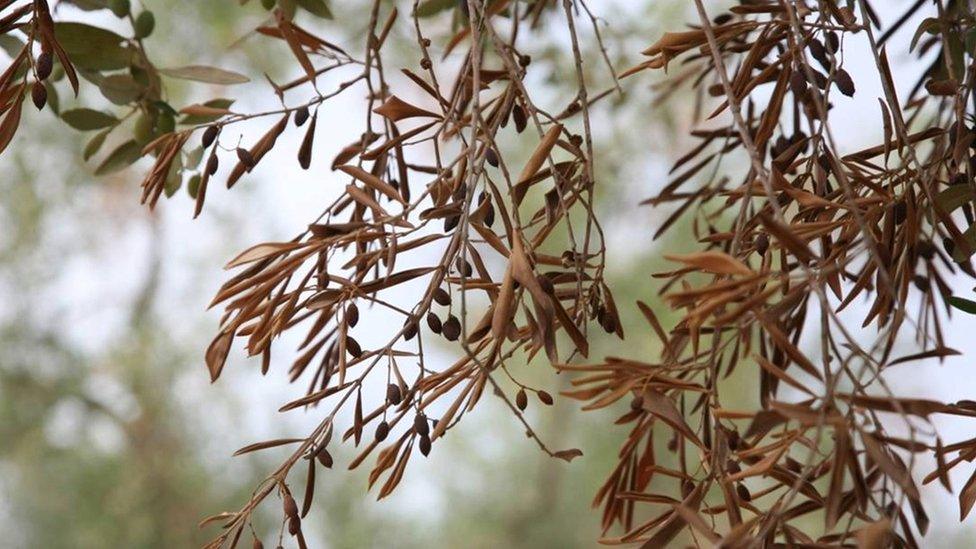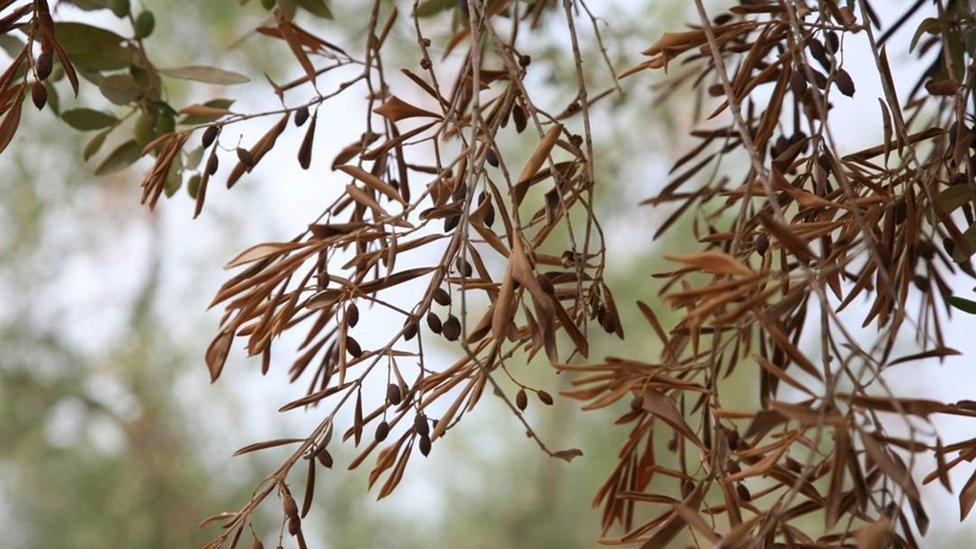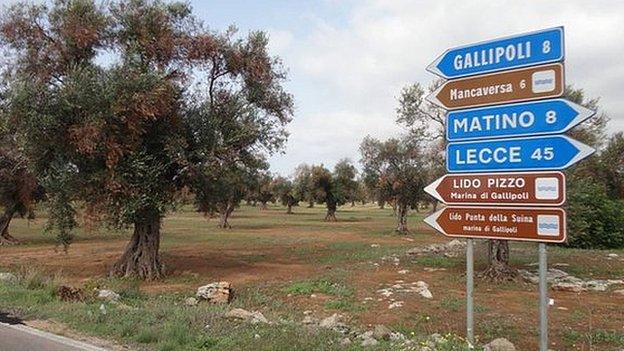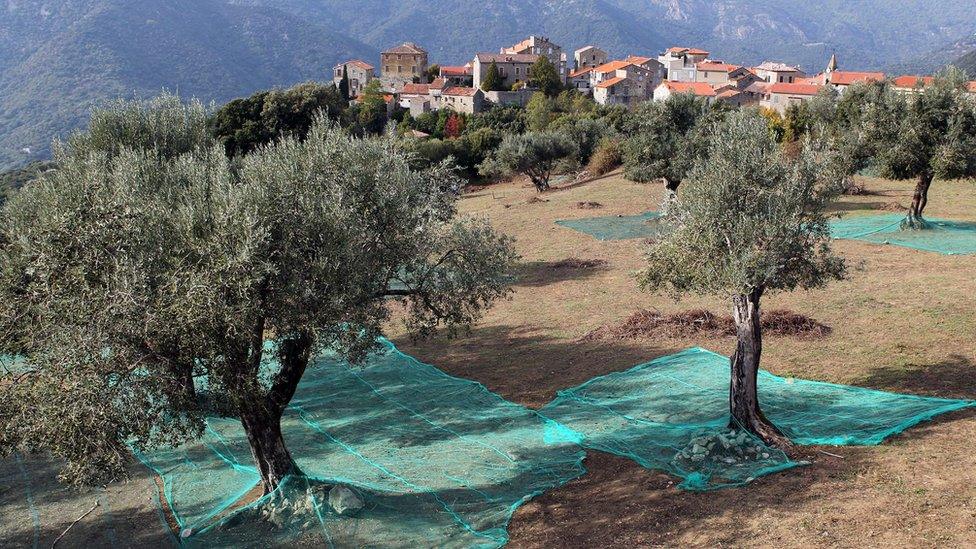Olive killer disease arrives on Mallorca
- Published

The invasive pathogen has affected thousands of hectares of olive plantations in Puglia, southern Italy
A disease that poses a "very serious threat" to the EU's olive industry has been recorded on the Spanish island of Mallorca for the first time.
Island officials said a movement ban covering 15,000 hectares had been imposed and measures had been taken to "contain and eradicate its spread".
Experts describe Xylella fastidiosa as one of the "most dangerous pathogens worldwide".
It was first recorded in the EU in 2013, and has since spread westwards.
'Ebola of olives'
Spanish newspaper El Mundo dubbed the bacterium the "Ebola of olive trees".
Officials from the Balearics' Department of Environment, Agriculture and Fisheries said the subspecies of the pathogen had been detected in three cherry trees at a garden centre during a routine check.
They added that the subspecies found on the island has only been recorded infecting cherry and oleander plants, but measures were being taken to eradicate it.
The Xylella fastidiosa bacterium invades the vessels that a plant uses to transport water and nutrients, causing it to display symptoms such as scorching and wilting of its foliage, eventually followed by the death of the plant.
Since it was first detected in olive trees in Puglia, southern Italy, in October 2013, it has been recorded in a number of other locations, including southern France.
Experts warn that should the disease, which has numerous hosts and vectors, spread more widely then it has the potential to devastate the EU olive harvest.
Globally, the EU is the largest producer and consumer of olive oil. According to the European Commission, the 28-nation bloc produces 73% and consumes 66% of the the world's olive oil.
Reports suggested that the X. fastidiosa outbreak led to a 20% increase in olive oil prices during 2015.
Follow Mark on Twitter, external
- Published13 November 2015

- Published9 January 2015

- Published24 March 2015

- Published2 September 2015

- Published30 July 2015
